Billboard advertising uses a large print advertisement to market a company, a brand, a product, a service, or a campaign. Billboards usually appear in high traffic areas in cities, along highways, on buses, or on building walls where they are seen by large numbers of riders, drivers, or walkers.

All About Billboard Advertising
We see them everywhere in every size and color. Technology has changed them but they are still an in-your-face type of advertising that not even social media can surpass. Here are some things you might not know about billboards.
They’ve been around for thousands of years—even before newspapers. An obelisk advertising a runaway slave was set up in Thebes, Egypt.
Electronic billboards are not as new as we might think, either. They’ve been around for a century. In 1904, a billboard pioneer, Oscar Gude installed the first electric sign in New York City. It advertised whiskey.
The largest billboard is in Madrid. At 5,265 square meters, it is the size of twenty tennis courts or an American football field. It weighs as much as a male hippopotamus.
New scented billboards appeal to sight and smell. A North Carolina grocery store billboard erected a “smellvertising” billboard with a grilled steak aroma.
Research shows that we may be exposed to as many as four thousand ads each day. An Arbitron study found that nearly three in four viewers notice ads and read them.

The Power of Billboard Advertising
- The average American spends 17,600 minutes in a car. That’s 300 hours annually.
- At last count, there were almost 350,000 billboards in America. Eight thousand of these were digital billboards.
- Over three in four people consciously look at billboards when they are driving or riding.
- Over half the population admits to finding a billboard ad highly engaging within the past month.
Advertising on Billboards: How Much does it Cost?
Many factors determine the cost of billboard advertising. These include the size of the billboard, its location, traffic volume in the area, and estimated viewership Billboard advertising costs are usually monthly. They may range from $250 on a rural highway to $22,000 in New York’s Times Square.
The world’s most expensive billboard is in Times Square. Google paid $2.5 million to rent the billboard for its debut. The cost was $625,000 a week. That’s 125 times the average NYC billboard rental. Times Square’s daily traffic is 300,000 people. Google’s billboard was viewed by nine million tourists and New Yorkers that month.
Along with the cost of the space rental, you need to consider the cost of ad design, the creation of the billboard-size advertisement, and the cost of installation.
A successful billboard can be read and appreciated as you pass by. Moreover, it takes viewers on a four-second journey. Since drivers can read only a few words in passing, the message must be the essence of an idea. Text-less messages can be powerful.
Effective billboards interact with their surroundings. Their bright colors and eye-catching graphics build brand recognition and elicit an emotion from the viewers. This is emotional marketing. The best ones for 2019 were selected by Edina.
New Trends in Billboard Advertising
Urbanization continues to grow. Thus, billboards will expand, enlarge, and become more technically attention-getting.
More billboards will be digital.
There is a trend toward more interactive billboards. Advertising spaces will be increasingly responsive and flexible towards audiences. These new interactive billboards will present the niche market with personal, engaging messages based on information about their habits, interests, and consumer preferences.
New trends will focus on the consumer—what he wants; what he needs; his shopping times; product appeal.

What Goes into a Billboard Advertising Decision?
Thanks to digitalization, billboards have become effective advertising tools of the twenty-first century.
Billboards provide multiple “touches”. The number of exposures is important when attempting to convert viewers to buyers.
With billboards, you have a captive audience of riders and walkers in high traffic areas. TV viewers can speed past commercials. Those slick, costly magazine and Internet ads often go unnoticed.
When an individual decides to advertise on billboards, many things determine this decision. Companies have specific goals for their advertising. They want to get the most exposure for their limited advertising budget. They weigh the odds of how many in their niche market will see a billboard, remember its message, and want to find out more about the product or service.
Biggest takeaways from billboards
- Billboards are huge. Thus, by their very size, they command attention.
- For small businesses with limited advertising dollars, billboards are effective.
- Billboards reach a widely diverse viewership.
- Billboards can deliver results—if the conditions are right circumstances.
- The average American spends almost an hour a day driving or riding.
- Three in five Americans learned about an event, a restaurant, a product, or service on a billboard. Of those, three in five later visited the location.
- Even expensive billboards deliver a lower cost per impression when you calculate how many people see them.
How Long Does a Billboard Stay up?
There is no one right answer to this question. It depends on several things. Is the billboard still generating new customers? What are your campaign goals? Do you have the budget to continue paying for this ad? Have you measured your return on investment? Are you getting your money’s worth?
If you are advertising an event, the billboard is time-sensitive. After the event, you are wasting your advertising dollars leaving it up.
Is it time to make a change to another location where more of your target market will see your ad? Have you considered switching to a larger ad? Is it time to go digital?
Have you thought about a building wall ad, a bus side ad, or a bench ad?
A general rule is that billboards stay up at least one month. Many campaigns are up for several months.
If you have decided that billboards are right for your company, check out the outdoor advertising information.

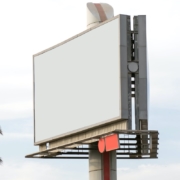
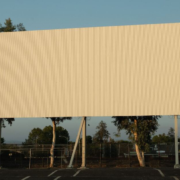
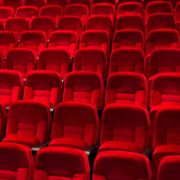
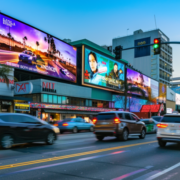



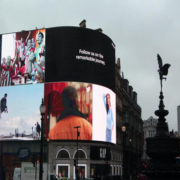

 787 792 4113
787 792 4113
